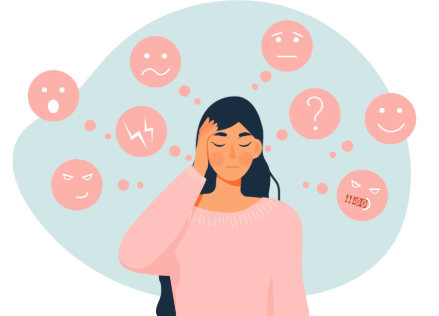Introduction: Thriving Beyond Fibromyalgia After 60
Fibromyalgia after 60 often feels like an unexpected guest overstaying its welcome. For many seniors, managing chronic pain, fatigue, and other symptoms can become an everyday challenge. But life after 60 doesn’t have to be ruled by fibromyalgia. With mindful strategies, lifestyle changes, and self-awareness, seniors can experience greater comfort, strength, and joy.
This article explores powerful yet practical tips designed specifically for managing fibromyalgia after 60 and reclaiming control over your life.
Understanding Fibromyalgia After 60: Why Symptoms Feel Different
The Impact of Age on Fibromyalgia Symptoms
Fibromyalgia symptoms can change or intensify after 60 due to:
- Slower healing processes
- Increased sensitivity to pain
- Age-related muscle loss
- Co-existing health conditions like arthritis or osteoporosis
- Emotional stress related to aging
Common Symptoms Seniors May Experience
- Persistent widespread pain
- Sleep disturbances
- Cognitive difficulties or “fibro fog”
- Morning stiffness
- Depression or anxiety
- Digestive issues
Recognizing Fibromyalgia Flare Triggers After 60
Triggers Seniors Should Watch For
- Cold weather
- Stressful situations
- Poor sleep habits
- Overexertion
- Certain medications
- Nutritional deficiencies
Creating a Senior-Friendly Fibromyalgia Routine
Gentle Exercise Without Strain
Exercise remains crucial but should be adjusted for comfort and safety. Beneficial options include:
- Water aerobics
- Tai chi
- Stretching routines
- Slow-paced walking
- Chair yoga
Prioritizing Rest and Quality Sleep
Tips for better sleep after 60:
- Maintain a regular sleep schedule
- Use weighted blankets for comfort
- Limit screen time before bed
- Try calming teas or warm baths
Smart Nutrition: Eating for Strength and Energy
Nutrients Seniors with Fibromyalgia Need Most
- Omega-3 fatty acids (reduce inflammation)
- Vitamin D (supports bone health)
- Magnesium (eases muscle cramps)
- Protein (prevents muscle loss)
- Antioxidant-rich fruits and vegetables
Sample Fibromyalgia-Friendly Daily Meal Plan
| Meal | Foods to Include |
| Breakfast | Oatmeal with berries and almonds |
| Lunch | Grilled salmon with leafy greens |
| Snack | Greek yogurt or a banana |
| Dinner | Chicken stir-fry with vegetables |
| Evening | Herbal tea with turmeric |
Pain Relief Techniques Beyond Medication
Natural Approaches to Soothe Discomfort
- Warm compresses or heating pads
- Essential oils like lavender or peppermint
- Meditation or guided relaxation
- Gentle massage therapy
- Acupuncture
Staying Mentally Strong and Positive
Building Emotional Resilience After 60
- Join fibromyalgia support groups
- Practice gratitude journaling
- Engage in hobbies or creative activities
- Connect with family and friends regularly
Tools and Devices That Make Daily Life Easier
Helpful Gadgets for Seniors with Fibromyalgia
- Ergonomic kitchen tools
- Lightweight vacuum cleaners
- Long-handled grabbers
- Padded footwear
- Adjustable beds or reclining chairs
Working With Healthcare Providers Who Understand Senior Needs
Building a Compassionate Care Team
- Rheumatologist experienced with fibromyalgia
- Physical therapist specializing in seniors
- Nutritionist for personalized plans
- Mental health counselor
Frequently Asked Questions
Can Fibromyalgia Symptoms Get Worse After 60?
Yes, symptoms may feel more intense due to age-related changes, but with proper management, discomfort can be reduced.
What Is the Best Exercise for Seniors with Fibromyalgia?
Gentle, low-impact activities like water aerobics, tai chi, or stretching are often ideal.
Are Natural Remedies Effective for Fibromyalgia in Seniors?
Many seniors find relief from heat therapy, massage, and relaxation techniques when combined with medical advice.
How Can I Sleep Better with Fibromyalgia After 60?
Creating a calming nighttime routine and maintaining a consistent sleep schedule can improve rest quality.
Is Fibromyalgia Life-Threatening in Seniors?
No, fibromyalgia itself is not life-threatening, but it can affect quality of life if not managed properly.
Can Diet Really Help with Fibromyalgia Symptoms?
Absolutely. A nutrient-rich, anti-inflammatory diet can ease symptoms and boost energy levels.
Conclusion: Living Vibrantly with Fibromyalgia After 60
Fibromyalgia after 60 may bring unique challenges, but it does not have to control your life. With patience, intentional care, and small daily adjustments, seniors can enjoy a life filled with comfort, activity, and fulfillment. Remember, the journey to a pain-free life is possible — and every positive choice moves you closer to that goal.

Click Here to Visit the Store and find Much More….
For More Information Related to Fibromyalgia Visit below sites:
References:
Fibromyalgia Contact Us Directly
Click here to Contact us Directly on Inbox
Official Fibromyalgia Blogs
Click here to Get the latest Chronic illness Updates
Fibromyalgia Stores
